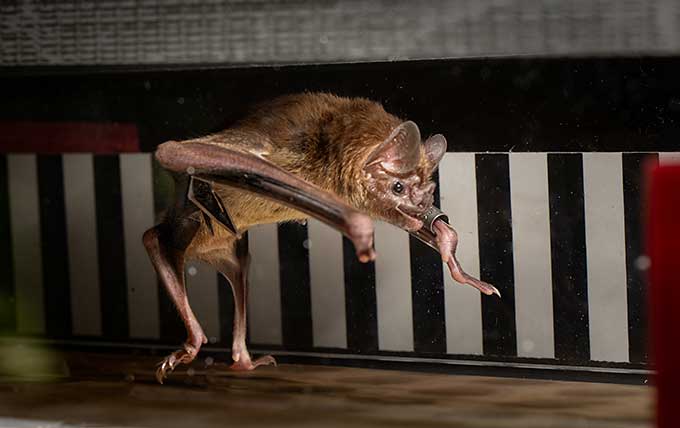Vampire bats have evolved to be such specialized bloodsuckers that they metabolize their food more like some blood-feeding insects rather than traditional mammals. A recent experiment showed that the common vampire bat, Desmodus rotundus, primarily uses blood as fuel for movement, especially when targeting cattle and horses. Researchers conducted experiments using a treadmill designed for bats to study their metabolism.
The study revealed that a significant portion of the carbon dioxide exhaled by the bats during exercise came from metabolizing high-protein cow blood rather than carbohydrates or fats. This suggests that the bats were primarily using a recent blood meal as their energy source, with trace amounts of amino acids in the exhaled gases. This metabolic process differs from the typical mammalian way of fueling exercise through carbohydrates and fats.
An important clue to the bats’ unique metabolism was the consistent ratio of carbon dioxide exhaled to oxygen used, even as researchers increased the intensity of the treadmill exercise. Typically, this ratio changes as exercise becomes more strenuous, indicating a shift from burning lipids to relying on carbohydrates. The discovery shows that vampire bats rely heavily on metabolizing blood for energy, similar to blood-feeding flies and mosquitoes.
This finding marks the first time that a mammal has been observed to primarily use a recent blood meal for energy, a behavior more commonly seen in blood-feeding insects. This unique metabolic process sheds light on the evolution and adaptation of vampire bats as specialized bloodsuckers. The research was conducted by Ken Welch, an ecological physiologist at the University of Toronto, and Giulia Rossi, a physiologist at McMaster University in Hamilton, Canada. Their experiments provided valuable insights into the metabolic mechanisms of vampire bats.
The researchers noted that while most mammals have the ability to break down amino acids for fuel, the vampire bats showed a heightened reliance on amino acids derived from blood as a fuel source. This unique adaptation could make the bats more susceptible to starvation due to the limited nutrient content in blood compared to traditional mammal fuels such as lipids. Welch suggested that the ancestral ability of vampire bats to utilize sugars and fats may have weakened over time, leading to a greater reliance on amino acids for energy.
Overall, the study highlights the remarkable metabolic adaptations of vampire bats to their blood-feeding lifestyle, providing new insights into the unique physiology and evolutionary history of these specialized mammals. By elucidating how vampire bats derive energy from blood, the research contributes to a better understanding of the ecological and physiological factors shaping the behavior and biology of these fascinating creatures. Future studies may explore the implications of this specialized metabolism on the conservation and management of vampire bat populations in the wild.


